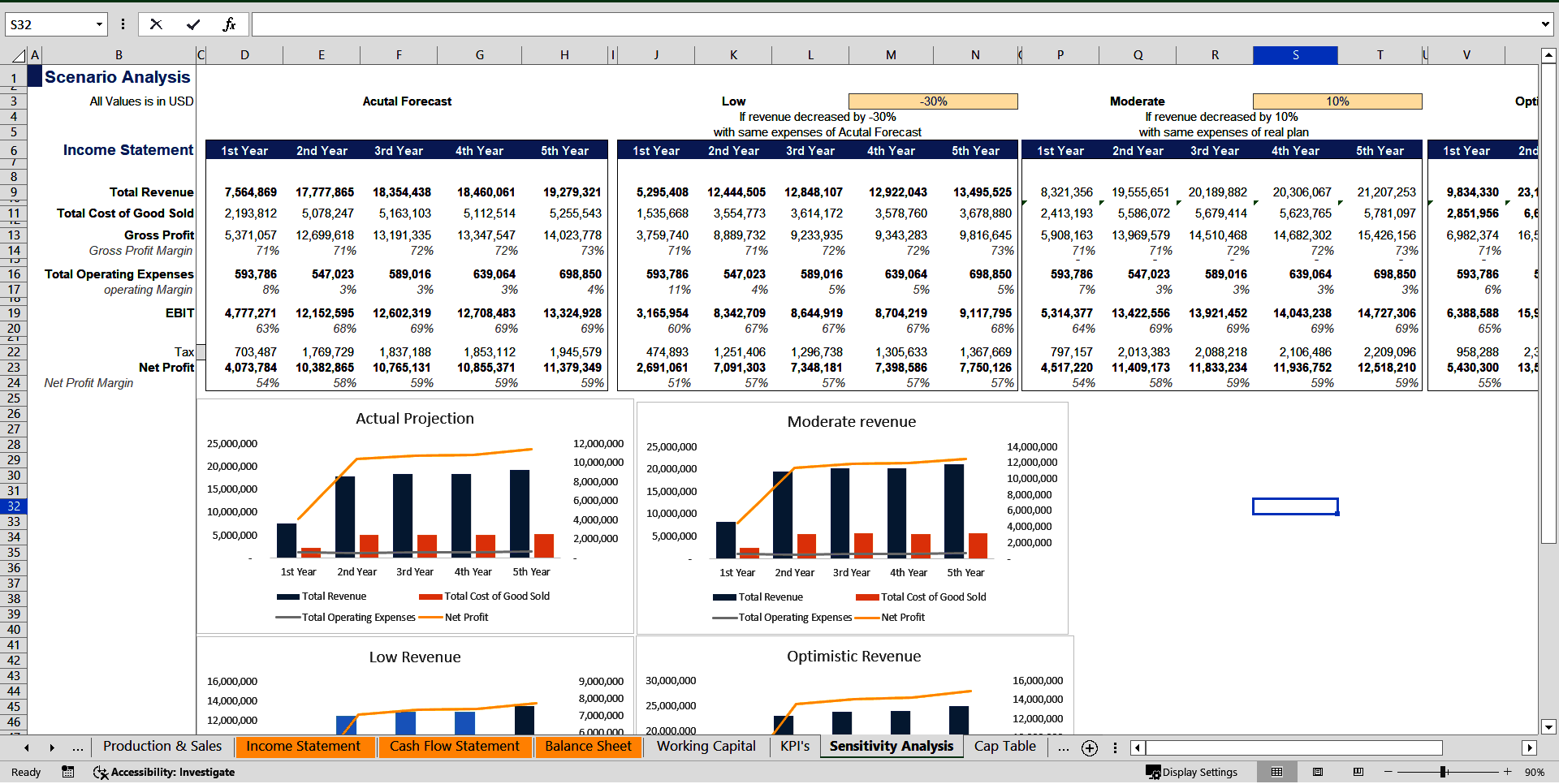Automobile Manufacturing Financial Forecasting Model (Excel XLSX)
Excel (XLSX)
BENEFITS OF THIS EXCEL DOCUMENT
- Save Time & Avoid Errors – No need to start from scratch or hire expensive analysts.
- Leverage advanced valuation methods (DCF, EBITDA & revenue multiples) to attract investors and secure funding.
- Visualize key metrics through an intuitive, presentation-ready dashboard for clear insights.
TRANSPORTATION EXCEL DESCRIPTION
Automobile Manufacturing Financial Forecasting Model
This comprehensive Excel template is designed specifically for automobile manufacturing startups and businesses, enabling detailed financial planning, operational forecasting, and investment analysis. Below is an analysis of its structure and key components based on the provided Excel file:
Key Features of the Automobile Manufacturing Financial Forecasting Model
Dynamic Input Drivers
Company & Operational Assumptions:
Facility size, inflation rate, production start date, and annual operational days.
Customizable product mix (e.g., EV Bikes, EV Scooters, EV SUV) with pricing, COGS breakdown, and variable costs.
Production Capacity:
Annual plant capacity, utilization rates, and monthly/daily production targets across a 5-year horizon.
Sales & Seasonality:
Monthly unit sales projections with seasonal adjustments (e.g., higher sales in specific months).
Asset & Investment Planning
CAPEX Details:
Tangible assets (e.g., land acquisition, factory construction, machinery) and intangible assets.
Depreciation schedules, salvage values, and useful life assumptions.
Funding Structure:
Equity investments, loans, and investor terms (e.g., desired returns, equity stakes).
Loan amortization schedules and interest calculations.
Financial Statements & Valuation
Automated Financial Reports:
Income statement, cash flow statement, and balance sheet generated from inputs.
Advanced Valuation Tools:
Discounted Cash Flow (DCF), EBITDA multiples, and exit valuation calculations.
IRR, NPV, and terminal growth rate analysis.
Operational Cost & Workforce Planning
Payroll Management:
Headcount planning with salary increments, bonuses, payroll taxes, and benefits.
Operating Expenses:
Rent, marketing, utilities, IT support, and other OPEX projections with annual escalation rates.
Risk & Scenario Analysis
Sensitivity Testing:
Adjust key variables (e.g., raw material costs, production scale) to model best/worst-case scenarios.
Cash Flow Buffer Analysis:
Safety buffer recommendations to mitigate liquidity risks.
Strengths of the Model
Granularity: Monthly sales, payroll, and expense tracking enable precise cash flow management.
Flexibility: Customizable product mix, pricing, and cost structures for diverse automobile segments (e.g., EVs, SUVs).
Investor-Ready Outputs: Valuation dashboards, sensitivity analysis, and funding requirements align with investor expectations.
This model is ideal for EV manufacturers, automotive startups, and investors seeking to validate unit economics, funding needs, and long-term profitability in the automobile sector. Free customization support ensures alignment with specific business requirements.
Got a question about the product? Email us at support@flevy.com or ask the author directly by using the "Ask the Author a Question" form. If you cannot view the preview above this document description, go here to view the large preview instead.
Source: Best Practices in Transportation, Integrated Financial Model Excel: Automobile Manufacturing Financial Forecasting Model Excel (XLSX) Spreadsheet, Excel Business Resource









